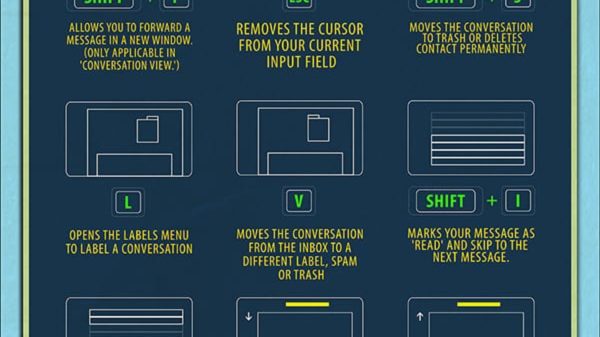Believe it or not, medical assistants are an essential part of the healthcare industry. Medical assistants take care of the “little” jobs that help keep a medical practice running smoothly. You may see them manning the front desk, assisting physicians in inpatient exams, preparing blood work for laboratory tests, and a whole slew of other places. The truth is without medical assistants, health care facilities would be a mess.
This needed industry is expected to see growth in the next decade as well. According to the Bureau of Labor Statistics, an additional 150,000 new jobs are projected to be created by the year 2020. The demand for medical assistants is high—especially with an aging baby boomer population and physicians looking to expand their practices. Because medical assistants can fill in the gaps between doctors and nurses, their roles in the next decade will become increasingly important. Medical assistant positions typically come with a whole range of benefits, including paid vacation, health and dental insurance, retirement benefits and more.
The road to be a certified medical assistant may seem daunting at first, but we have narrowed down some of the key steps that you need to take in order to begin this rewarding career. Essentially, there are two routes to being a medical assistant: the official way, and the unofficial way. We’ll look at the unofficial way first.
The Unofficial Way of Jumpstarting Your Career as a Certified Medical Assistant
The unofficial way of being a certified medical assistant requires training—just not the kind that you have to get a degree at the end of. The one degree that the unofficial route does require though is the high school diploma or GED. This is the minimum level of education required for candidates hoping to be a certified medical assistant. The next step is to find a physician that will provide training. This is the tricky part because most employers prefer to hire someone that already has formal training. Don’t let this discourage you. There are still some physicians that are willing to provide the training necessary to become a medical assistant. If you are accepted by a doctor, you will receive intensive hands-on training from the other staff, doctors, nurses, and other medical professionals.
At the end of five years’ worth of work experience, you will be able to sit for the Registered Medical Assistant Exam from the American Medical Technologists (AMT), providing you are of “good moral character” and have not broken the law. While the credential of Registered Medical Assistant is different from Certified Medical Assistant, the two positions are comparable in their duties and responsibilities. Once this exam is passed candidates will receive their credentials in the mail and officially be Registered Medical Assistants.
The Official Way of Jumpstarting Your Career as a Certified Medical Assistant
While formal education is not required, it is highly recommended to those who desire to become certified medical assistants. The Certified Medical Assistant credential is given by the AAMA or the American Association of Medical Assistants and it is only given to those that have completed accredited medical assistant programs. The official training programs are not as direct as the unofficial method because the actual hands-on experience is postponed for a while. However, this method may be more rewarding in the end as the degree program offers a very thorough education.
The first step to being a certified medical assistant is finding a properly accredited program. This is an essential step because the AAMA will only accept degrees from properly accredited programs. Accreditation ensures that the right skills and knowledge are taught to medical assistants. The two main bodies that gran accreditation in the United States are the CAAHEP (Commission on Accreditation of Allied Health Education Program) and the ABHES (Accrediting Bureau of Health Education Schools). From here, you will have to make the decision about whether you want to take a program at a traditional college or vocational school or to take a program online. Different programs have different advantages. Some programs are diplomas or certificates that can be earned in as little as 9-12 months, while other programs are full out associates degrees that are earned in 18-24 months.
Traditional Schooling Methods
Traditional schooling on campus allows students to have face-to-face interaction with instructors, and collaborate with other students. If you thrive in a highly structured environment with a set schedule, then on-campus training is the place for you. Of course, the structure is also one of its flaws because it does not offer much flexibility. On-campus, studying might also be more expensive than online schooling because of housing, commuting, and travel expenses.
Online Schooling Methods
Online programs on the other hand let students do the work at their own time, and at their own pace, and anywhere they want. This is especially good for students that have hectic schedules that are difficult to manage. Commuting, housing, and travel expenses are significantly lower because of remote access. However, it is this flexibility that is also a drawback because online programs require a lot of self-motivation. Online access also means that there is little (if any) face-to-face interaction with other students (though there are many programs that involve digital classrooms and programs like Skype available now).
Hybrid Schooling Methods
The third option for prospective students is a hybrid program. Hybrid programs are the best of both worlds—allowing for students to do classwork online and meet with other students on campus for laboratory work or training. Ideally, this is a balance and the best of both worlds. Students will be able to interact with other students and teachers, and there are reduced expenses because of reduced commuting time. These programs still take a bit of planning and organization to manage but they are entirely doable while providing valuable experience.
Medical Assistant Certification
After finding the program that is right for you and graduating from it, the next step is to become certified. Certification is a mark of excellence that many employers look for (and some are even willing to pay more for). We’ve already talked about the accreditation requirements, so let’s talk about the other requirements. Certification involves an examination administered by the AAMA. Candidates are required to apply for the exam and pay a fee of $125 if you are a member of the AAMA, or a CAAHEP or ABHES completing student or a recent graduate, otherwise, the fee is $250.
The exam covers a wide range of topics including administrative and clinical procedures, anatomy and physiology, medical terminology, medicolegal guidelines and regulations, and laboratory procedures. Of course, you should study for the exam. Study materials and practice exams are available online through the AAMA. These study materials should be able to adequately prepare for the exam.
Once candidates have passed the exam, they will receive an official certificate and wallet card with their Certified Medical Assistant credentials. This allows candidates to put the CMA credential on resumes and anytime they apply for a medical assistantship in the country. Being a certified medical assistant can be a rewarding decision, though it may take a bit of planning and work. With this credential, you will be able to be part of a medical industry that is continuously evolving.
 Although certification is not a legal requirement for medical assistants, there are many benefits that it offers. Certification gives you a competitive edge: it demonstrates your commitment to the profession and shows that you possess a good level of competency and knowledge in the field.
Although certification is not a legal requirement for medical assistants, there are many benefits that it offers. Certification gives you a competitive edge: it demonstrates your commitment to the profession and shows that you possess a good level of competency and knowledge in the field.
Because it indicates a high standard of proficiency, the majority of employers prefer to hire certified medical assistants. In addition to prestige among coworkers and employers, certification leads to better job security and opens the door for career advancement. Promotions for certified medical assistants include office manager, clinical supervisor, and even teaching positions.
Certified medical assistants are paid more competitive wages and receive more valuable benefits than those without certification. Your credentials must be renewed every three to five years, depending on the certifying body, so it also helps you remain current and knowledgeable about your career field. In addition to general certification, it is also possible to become certified in a specialty area such as optometry, podiatry, or ophthalmology.
Earning Medical Assistant Certificates
Most medical assistant certificate programs last one year or less, though there are a few that last two years. Students who consider enrolling in a two-year medical assistant certificate program should keep in mind that it takes the same amount of time (and often the same amount of money) to complete an associate’s degree, and a person who holds an associate’s degree will have more career and educational opportunities than a person who has only a training certificate. Still, one-year programs are good investments for medical assistants, especially those who plan to work in large cities where jobs are typically more competitive.
Students will take clerical courses like accounting, transcription, insurance processing, keyboarding, and recordkeeping, which will help them learn to assist medical professionals with general office tasks. Some medical assistants receive the same sort of training as a medical transcriptionist or medical coding and billing specialist. Important medical courses, like anatomy, physiology, and medical terminology will also be included in a training program, though they will not expect as much of students academically as a two-year associate’s degree program would. Classes will focus on practical skills like laboratory techniques, clinical procedures, first-aid, and technology management.
Most people complete their medical assistant training at an online vocational school, either as part of a high school program or at a post-secondary vocational training institute. Many community colleges also offer a one-year certification option, and some major hospitals might run on-site training programs for medical assistants that result in a certificate. This option can be ideal, as it gives students the chance to build connections in the industry and learn what it is like to be in an actual medical setting. (American Association of Medical Assistants)
Certification Associations
Medical assistants interested in advancing their career by becoming certified can do so through one of two organizations: the American Association of Medical Assistants, and the Association of Medical Technologists. Both associations award certification credentials by examination. Although the exact process varies, you will typically need to complete a training program accredited by either the Commission on Accreditation of Allied Health Education Programs (CAAHEP), or the Accrediting Bureau of Health Education Schools (ABHES). You must be a graduate of one of these accredited programs in order to be eligible for certification. (American Association of Medical Assistants)
Certification Process
Coursework in a training program usually includes academic and clinical training in anatomy, medical terminology, accounting, patient relations, and medical law and ethics. After graduating from an accredited post-secondary medical assisting training program, you must also pass a certification examination.
Once you have successfully fulfilled these requirements, you receive either a Registered Medical Assistant title (awarded by the Association of Medical Technologists), or a Certified Medical Assistant title (awarded by the American Association of Medical Assistants).
Having earned your initial certification, you must recertify every three to five years by either continuing your education or retesting.
Using a Medical Assistant Certificate
A graduate of a medical assistant certificate program is qualified to work as a medical assistant at hospitals and clinics of all types. Generally, only entry-level positions will be available to them, but there may be opportunities down the road for promotion, raises or further education in the medical industry.
Article Resources:
American Association of Medical Assistants
AAMA article
American Medical Technologists
AlliedHealthSchools.org

















